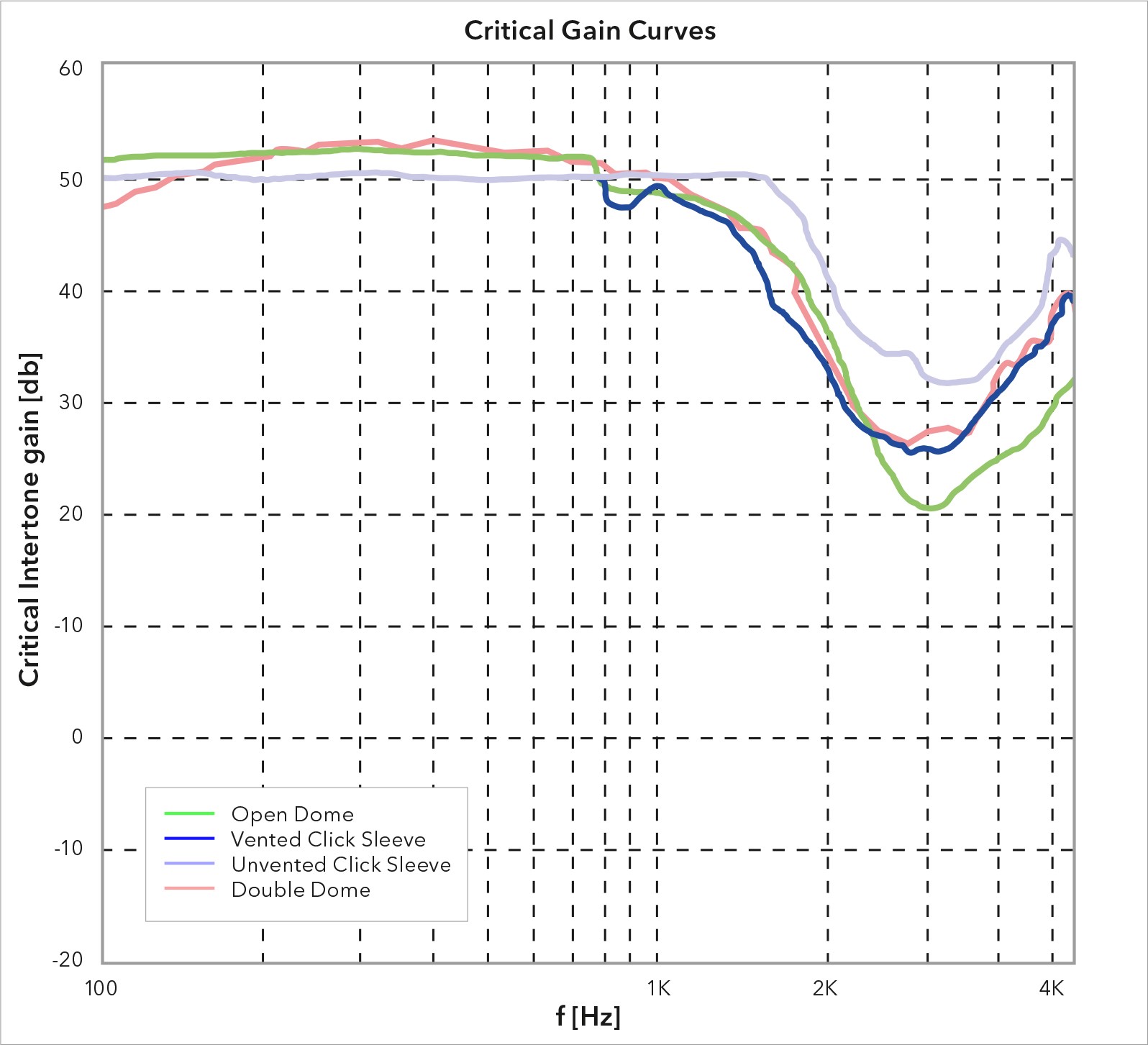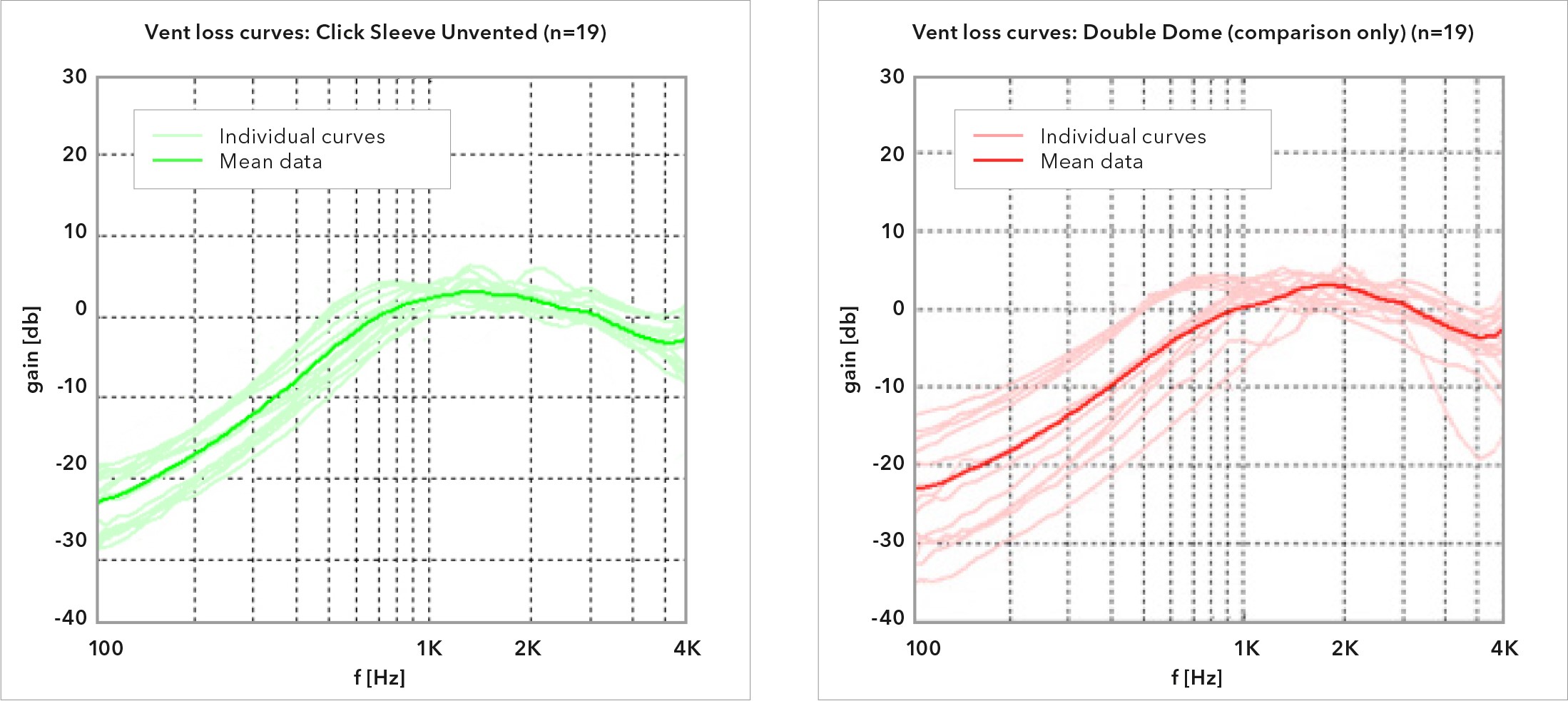Signia Click Sleeves for RIC fittings improve audiological performance and usability
Rebecca Herbig Au.D.
As digital hearing aids become increasingly advanced, the spotlight often shines on signal processing features, software functionality, and connectivity capabilities, rather than the physical components. At Signia, however, we constantly seek to improve every aspect of design, engineering, and production processes to create a better hearing aid. The new Click Sleeve for Receiver-in-Canal (RIC) fittings is a seemingly simple yet effective solution which improves both wearer comfort and audiological performance.
Acoustic Couplings Matter
The construction and design of a small silicone dome may seem insignificant compared to the significantly more sophisticated and intricate sound processing. But it is worth remembering that adequate and consistent coupling is essential to leverage these signal processing benefits for each individual user. No matter how brilliant the sound created by the hearing aid, it still needs to pass through the dome to be delivered to the patient’s ear. When fit inappropriately, a thin tube fitting with its standard domes and tips can come with some inherent disadvantages.
- It does not provide a consistent and sufficient seal in the ear canal. As a result, the hearing aid often cannot provide appropriate amplification due to the risk of acoustic feedback. An inadequate acoustic coupling can therefore compromise the best first fit algorithm.
- Since domes are not customized to the ear, the resulting sound quality and audiological performance can be inconsistent with a large inter- and intra-individual spread.
- Studies show that the physical fit is an important factor that affects overall hearing aid acceptance (Kochkin, 2010).
RIC Click Sleeves
The new Signia Click Sleeves for RIC hearing aids solve these problems by providing a more comfortable and consistently better acoustic fit (Figure 1). They are similar in design to the highly successful Click Sleeves for Silk primax hearing aids (Lotter, 2016). RIC Click Sleeves are composed of two functional regions. A fully flexible portion maximizes canal shape adaptability, retention, and acoustic sealing. A second semi-flexible portion helps with placement in the ear canal. Similar to the Silk version, RIC Click Sleeves also feature small vent holes at the tip. The oval shape of the Click Sleeves has shown to conform better to most ear canals, which results in less sealing variations compared to rounded domes.

Figure 1. RIC Click Sleeves are available in the sizes small, medium, and large, and in vented and closed versions.
Click Sleeves Add More Stable Gain
Lab tests have been conducted to assess the RIC Click Sleeves to determine their effectiveness in reducing feedback. Criticial Gain Measurement (CGM) curves reflects the amount of insertion gain the fitting can provide across the frequencies before feedback occurs. Figure 2 shows the 25th percentile of Critical Gain Measurement (CGM) conducted on 19 individual ears using previously available domes as well as the new Click Sleeves in both vented and unvented versions. This means that each of acoustic coupling evaluated, 75% of the ears had higher CGM curves than is shown here.
As can be seen, the unvented Click Sleeve (violet) allows higher insertion gain than any other coupling, especially around the feedback-critical frequencies of 3 to 4 kHz. The vented Click Sleeve, which is designed to be equivalent to a more open dome, also provides a more stable insertion gain than the open, semi-open, and closed domes. These measurements show that compared to previous solutions, the new RIC Click Sleeves can provide more insertion gain without feedback, resulting in a better fitting and sound quality.

Figure 2. Critical Gain Measurement curves obtained with various acoustic couplings on 19 individual ears.
Click Sleeves Provide a More Consistent Fit
Measurements were conducted to compare the subject variability of the new Click Sleeves and existing click domes in terms of vent loss. Vent loss curves describe how much sound leaks out of the ear canal depending on how well the acoustic couple seals the ear canal. In more open fittings, most vent loss occurs in the lower frequencies, and can significantly affect how patients perceive their own voice and how much low-frequency amplification they can expect.
The vent loss curves of 19 individual ears with Click Sleeves and click domes were measured and shown in Figure 3. Observe that the individual curves (lighter shaded lines) for the Click Sleeves (Figure 3, left) are clustered closer together while those obtained with click domes show a much wider spread, especially in the lower frequencies (Figure 3, right). These results indicate that with the new Click Sleeves, hearing care professionals can expect a more consistent and reliable fitting and resulting sound quality for their patients.

Figure 3. Vent loss curves obtained for 19 individual ears with the new Click Sleeves (left) and existing click domes (left).
Fitting RIC Click Sleeves
The new RIC Click Sleeves offer a more consistent fitting and better audiological performance, which should in turn reduce fine tuning and follow-up fitting time for the hearing care professional. They should be the first choice for acoustic coupling when fitting RIC instruments. Available in three sizes and vented and unvented varieties, they should meet the meets of most RIC wearers.
For best results, connect the Click Sleeve to the receiver so that the oval shape of the sleeve is “standing up” when seated in the ear canal. It is also important to instruct the patient regarding the proper orientation of the sleeve when inserting the hearing aids.
Conclusion
Every single aspect of Signia technology is carefully designed and thought through to bring benefit to the wearer in multiple aspects. The new RIC Click Sleeve is the latest example of how we achieve better audiology and wearer comfort at the same time. The new Click Sleeve provides a better and more consistent fit in the ear canal, thereby ensuring more stable gain as well as less variations in vent loss. A better physical fit meansmore appropriate gain and better sound quality can be delivered consistently into the patient’s ear, which in turn reduces the need for fine tuning.
A better fitting Click Sleeve also means that more of its surface area makes contact with the ear canal, which some patients may find more comfortable than traditional domes. This improved wearer comfort combined with better audiology ultimately contributes to wearer satisfaction.
References
Kochkin S, et. al., (2010). MarkeTrak VIII: The impact of the hearing healthcare professional on hearing aid user success. Hearing Review, 17(4), 12-34.
Lotter, Thomas. (2016). Silk and Click Sleeves – A New Concept for In-the-Ear Fittings. Signia Product Backgrounder.
